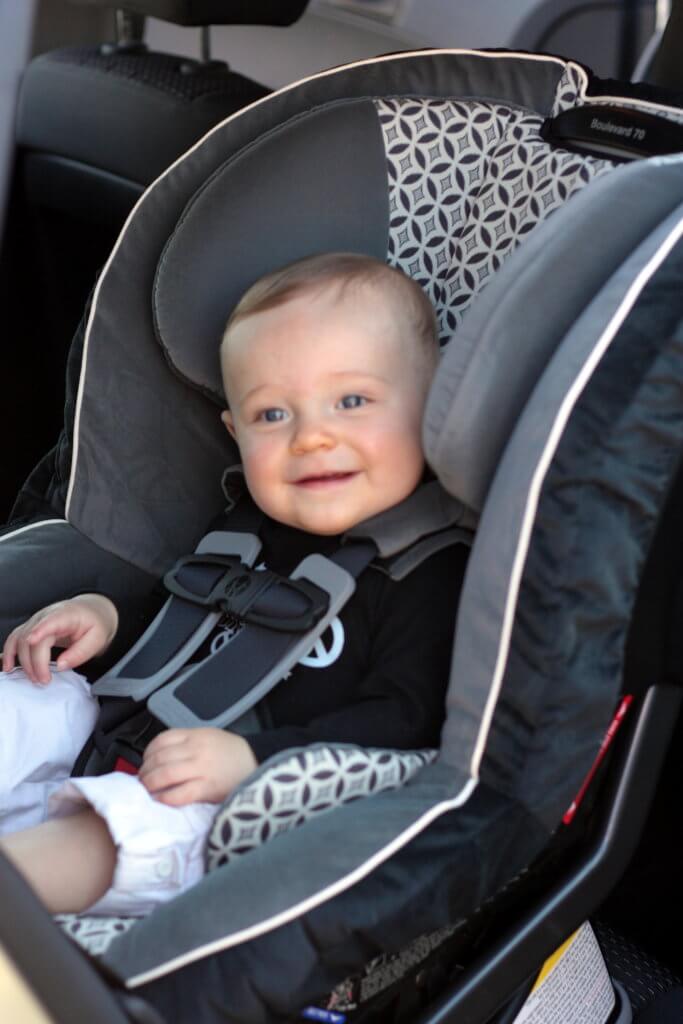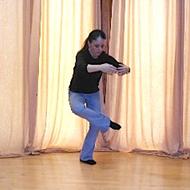One of the biggest surprises of parenthood is the toll it takes on your body. Yes, sleep deprivation and constant feedings can wear you down. But the joy of picking up your baby to hold her close can lead to a variety of aches and pains, especially in your back. Keep these tips in mind to reduce pain and improve your time with your little one.
The number one thing to remember, says Ann Cowlin, the creator of Dancing Thru Pregnancy, a fitness program for expectant mothers (and a Physiquality partner), is to “bring your infant or child close to your center line (or your center of gravity) before standing up.” For example, if you’re picking your baby up off of the floor, kneel on the floor to get closer to him, pick him up and snuggle him into your chest, then stand up.

Ann reminds moms and dads to engage their core; use those transverse abdominals to support your child. And when initially picking her up, try to put more of the force into your elbows and core rather than your hands or wrists; not only are those muscles and joints stronger, but the further away the baby is from your body, the more stress it will put on your back. As Ann illustrates, “when you hold a 40-pound child firmly against your body, using your elbows to support her, it places less force on the lumbar spine than holding a glass or wine or mug of beer straight out in front of you.” (Not that new parents have ever needed to resort to spirits after the little one’s bedtime.)
While it’s challenging to do so after a new baby comes into the house, it’s important to continue exercising, especially for the new mom. It helps her to strengthen her core and recover from birth, which will make picking up baby a lot easier. In addition, if you can leave the house to take fitness classes, you’ll be able to fit in some socializing, which is important when the rest of the day is spent with an infant. (Looking for a class where you can work out with your little one? See if there is a Mom-Baby Fitness class from Dancing Thru Pregnancy near you.)
While the car seat basket that moves from car to stroller to restaurant has helped the parents of infants move around more freely, be careful when lifting and carrying the basket, especially when baby is inside — it’s the equivalent of lifting three to four paint cans. Be sure to carry the basket with both hands, and bend your elbows to help support the weight. And again, carry it as close to your body as possible.
When the car seat can no longer be loaded outside of the car, be sure to get your child as close as possible to the seat before extending your arms to place him into the seat. If your car seat is in the center of the back seat, Ann advises sitting down next to the seat before lifting him into the harness. The key is to keep the child’s weight as close to your center of gravity for as long as possible, to reduce the stress to the lower back. And, when possible, avoid twisting your body to position your child in the seat. Try to place yourself facing the seat instead.

Speaking of growing toddlers, beware of the balancing act on one hip. While it may feel like it reduces the stress of holding your child by jutting out one hip and resting her weight on your outer hip bone, it shifts your posture and can affect the muscles along both sides of the back, shortening the muscles on one side while stiffening the muscles on the other. It’s always best to carry your baby or toddler in front, with an even posture. If your toddler is getting too heavy for that, then use a stroller or have her stand or walk next to you.
Lastly, be aware of your posture even when pushing that stroller; keep your posture upright with a straight back and without hunching your shoulders. Physical therapists from the American Physical Therapy Association remind parents that “the force to push the stroller should come from your entire body, not just your arms. Avoid pushing the stroller too far ahead of you because this will cause you to hunch your back and shoulders forward.”
Thank you to our contributors:

Ann Cowlin, MA, CSM, CCE, is the creator of Dancing thru Pregnancy, one of Physiquality’s partner programs. Ann is the author of Women’s Fitness Program Development, a guide to creating girls’ and women’s health and fitness programming, and is the expert consultant for the U.S. Army’s Pregnancy and Postpartum Train the Trainer Program.
Health tips for parents. American Physical Therapy Association.
Empen, Kathy. Holding and picking up babies. WebMD, July 2012.
Cowlin, Ann. Postpartum exercise: Creating your third body. Dancing Thru Pregnancy, May 24, 2011.
“Day 105: ‘Riding in style'” by seanmfreese is licensed under CC BY 2.0.